Tips for offering teeth bleaching to your patients
In this blog post we’re going to look at different types of bleaching and tips for making the treatment more effective for the patient.
There are several types of bleaching:
- over the counter bleaching systems
- at-home trays
- in-office bleaching treatment with or without a light.
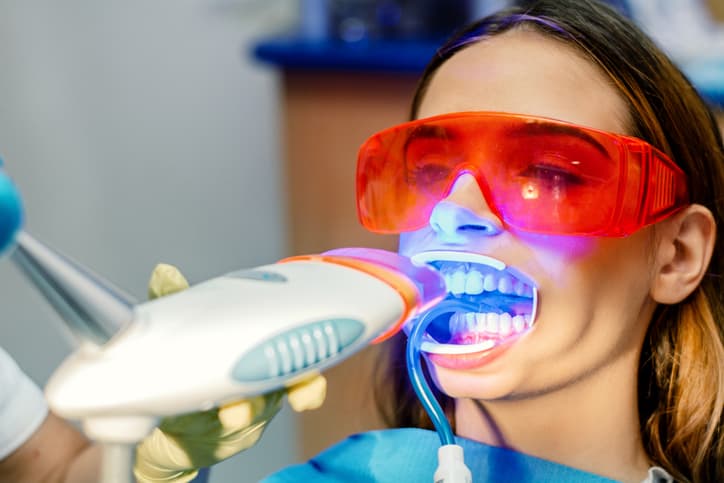
Over-the-counter bleaching
First, we’ll talk about the over-the-counter bleaching.
Four types of over-the-counter whitening are:
1. strips.
2. brush-on applications for bleaching gel.
3. one-size-fits-all bleaching trays.
4. toothpaste for whitening.
Each of these can be effective over time to varying degrees. And it’s an easy way for the patient to try some bleaching.
Some products may be less effective if you think about the cumulative cost of repeat purchases. And patients may find some of the non-custom fitted delivery methods harder to apply themselves. Sometimes it’s hard to adapt a bleaching strip to all the surfaces of the teeth to effectively apply the bleaching gel.
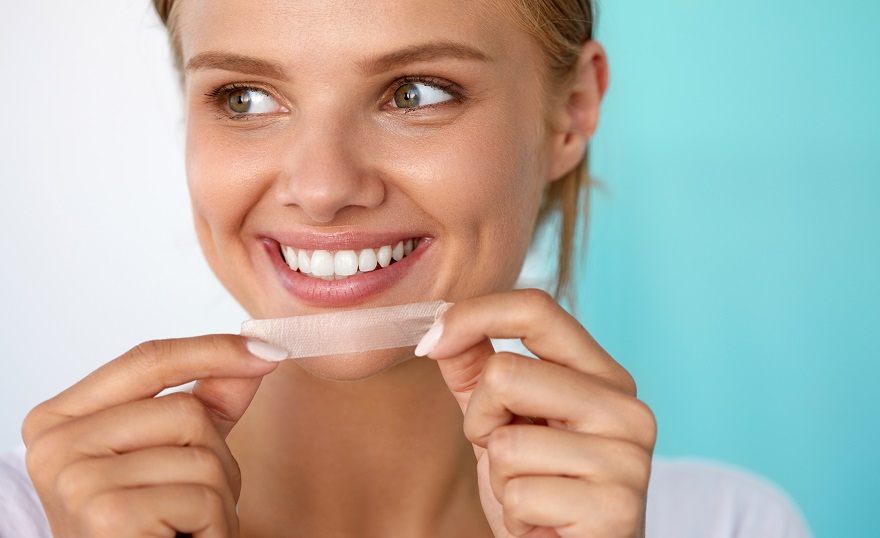
At-home bleaching by a dentist
The at-home bleaching trays from a dentist allows for a medium intensity gel, perhaps 11% or 16% carbamide peroxide.
It can be very effective if used consistently for a couple weeks. It gives a longer exposure time than you get from just in-office bleaching, because you’re able to use it for 15 minutes up to an hour at a time and multiply that by several weeks.
These trays give a lot of exposure time to the bleach and gel. There can also be less sensitivity compared to the in-office bleaching because you have a lower concentration of gel or different concentrations of bleaching gel you can use.
Also having the bleach and gel, the bleaching trays at home gives the patient flexibility to touch things up when they want.
After the initial treatment, patients may go through two or three weeks of bleaching at home, and then every six months when they get their cleaning, they may bleach again for a couple days just to keep things their brightest.
Patients can also get a big tube of at home bleaching gel, and it can last the patient a long time.
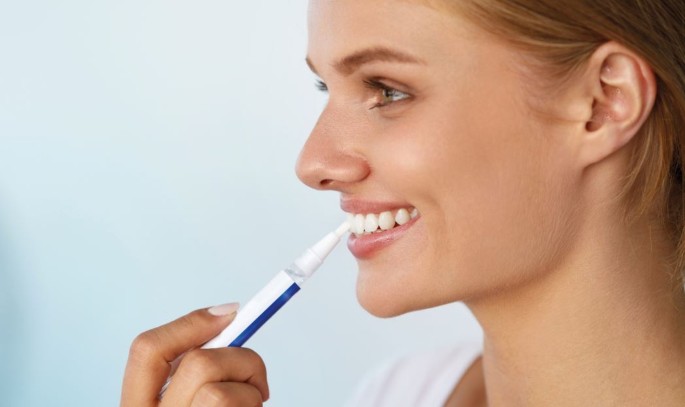
Tips for at-home bleaching
- the patient should try to avoid dark colored beverages, coffees, dark sodas, tea.
- they should drink more clear liquids, especially water, and try drinking through a straw to avoid staining the teeth during the bleaching process.
And to do at-home trays, the dentist just needs to make a model of the teeth, make the bleaching tray, and get the tube of bleaching gel.
So compared to multiple boxes of bleaching strips, the cost for the at-home bleaching gel can be affordable and more effective from a dentist. And the patient benefits from a custom fitted tray
In-office bleaching
Another bleaching system is the in-office bleaching system from the dentist.
This allows the strongest concentration of bleaching gel. It can have a quicker effect, and treatment can be less than one hour.
And in one hour’s time in the office, the assistant can apply, remove, and reapply several applications of this higher concentration of whitening gel.
But there is more risk for sensitivity for some patients.
Remind the patient to let the assistant know when there’s any sensitivity or tingling in order to avoid any extra sensitivity after the treatment, especially if we feel like the bleaching gel has starting to leak onto the gum or the lip.
Because there is more risk with the in-office bleaching of irritating the gums, it’s a good idea to have vitamin E oil on hand.
Just a little bottle of vitamin E oil can really be soothing if there’s a little bit of a chemical irritation on the gum or the lip.
Surgical Suction Tips can be excellent for removing excess bleach in between applications of bleaching gel and the in-office treatment, you can use the surgical suction to remove it without the water spray which could spread the gel in different places onto the soft tissues.
The in-office treatment can be good for patients who just aren’t that compliant with using at-home bleaching trays and they just want something quicker.
Adding a curing light sometimes can activate certain gels, but it does give kind of a focus for the assistant and the patient during the experience.
Pro-tip for in-office bleaching
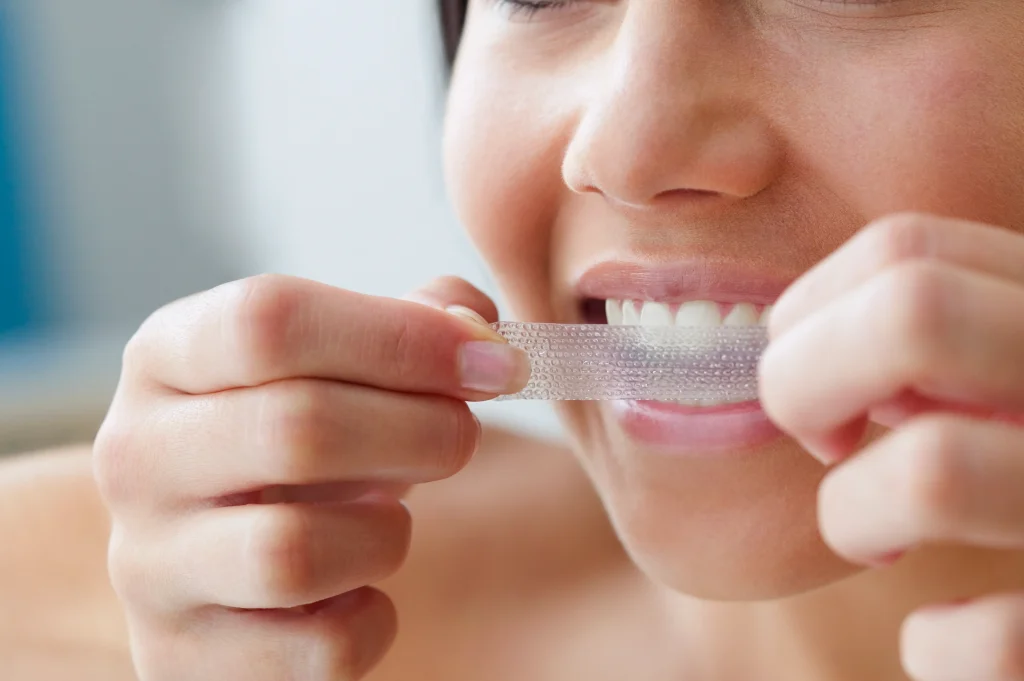
Combining in-office with at-home bleaching
For patients looking for the ultimate bleaching experience and to get the maximum effect, they can do a combination of in-office bleaching and at home bleaching.
And with this, we kind of sandwich an in-office bleaching followed by two to three weeks of using the bleaching trays at home.
And then a second in-office bleaching. So first start with the in-office, bleaching to get a quick effect, then go home with some bleaching trays and bleaching gel to continue the process at home for two to three weeks more.
And then the patient knows they’re coming back in a few weeks for a second in-office bleaching.
And that deadline is going to encourage the patient to be compliant with using the trays at home because they know they’re coming back to the office to have their photos and tooth shade checked and they have a deadline to get this treatment done.
So they’re going to work their hardest working on the trays 15 to 45 minutes a day every day until they come back to the office
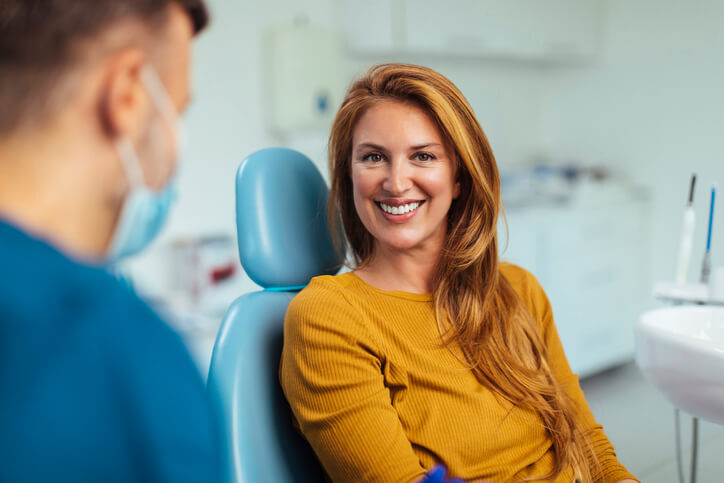
The importance of properly treatment planning bleaching appointments
When bleaching with any kind of bleaching method that you choose, it’s important to do proper treatment planning before the patient does the whitening.
First, just to make sure there’s no active decay.
Second, it’s important to discuss with the patient that bleaching doesn’t whiten composite
fillings or porcelain crowns.
So sometimes it might leave a restoration looking dark as the enamel around the restoration lightens… even though you can still bleach in many instances and things will look okay and blend together.
But still you have to be careful that sometimes there is a risk of a porcelain crown on a front tooth looking dark after all of the other teeth around it have been whitened.
So often, if someone’s getting ready to do a crown, they may anticipate doing bleaching before doing the crown. And in these cases, that makes sense.
One suggestion though: after you’ve done your bleaching wait a week to let the teeth rehydrate and let the shade of the teeth settle before doing the crown because you really want a stable shade to match the porcelain to.
You don’t want to do an in-office bleaching and then try to match a porcelain shade to that tooth at the same time because there may be some rebounding and settling of that shade as the tooth rehydrates.
The porcelain crown might look too light if the shade settles. So stop all bleaching for at least a week to let the tooth rehydrate and let the shade settle before matching any porcelain crowns.


cheap generic lasuna – lasuna where to buy himcolin where to buy
besivance drug – sildamax for sale sildamax drug
order neurontin 600mg without prescription – brand gabapentin 100mg order sulfasalazine pill
oral benemid – carbamazepine sale carbamazepine tablet
buy generic celecoxib 200mg – buy indomethacin 50mg pills order indocin pills
mebeverine 135mg sale – buy mebeverine pills for sale cilostazol 100mg sale
buy cambia – brand aspirin 75 mg buy aspirin 75mg pill
priligy dapoxetina 30mg nos eua Using a combined chemico genetic approach, another recent study showed that the histone H3K27 demethylases KDM6A UTX and KDM6B JMJD3 function as central regulators of human Th subsets 49
buy rumalaya without a prescription – order shallaki generic amitriptyline 50mg tablet
generic pyridostigmine – purchase imuran sale order imuran 25mg without prescription
purchase diclofenac generic – order diclofenac generic buy nimotop no prescription
lioresal sale – order feldene 20mg for sale buy feldene 20mg pills
cyproheptadine usa – order periactin pill buy tizanidine online
buy cheap generic meloxicam – generic mobic 7.5mg order toradol pills
buy artane online – order trihexyphenidyl buy cheap voltaren gel
cefdinir 300mg pills – clindamycin brand
accutane 10mg over the counter – isotretinoin 20mg ca order deltasone 5mg for sale
order deltasone 40mg pills – buy prednisone generic buy elimite cream for sale
acticin for sale online – buy acticin cream order retin cream online
order betamethasone 20 gm generic – betnovate 20 gm us monobenzone order online
buy flagyl 200mg sale – order generic cenforce 100mg cenforce 100mg usa
buy augmentin 625mg for sale – augmentin oral levothroid over the counter
clindamycin pill – clindamycin oral buy indomethacin 75mg pills
losartan online order – losartan medication order generic keflex 250mg
where to buy crotamiton without a prescription – buy crotamiton without a prescription buy generic aczone
order provigil 200mg for sale – provigil ca pill melatonin
buy zyban 150 mg online – order ayurslim without prescription buy shuddha guggulu tablets
xeloda usa – danazol over the counter buy danazol generic
progesterone 100mg generic – order ponstel generic buy generic clomiphene
purchase alendronate pill – buy fosamax 70mg pills buy generic provera for sale
buy aygestin sale – lumigan eye drops buy generic yasmin online
buy priligy 60 mg 5 g dL; hematocrit, 55 normal range 38
Aiden zuunejiXVUiR 6 4 2022 where can i buy priligy
buy generic estradiol for sale – femara 2.5 mg brand cost anastrozole
order dostinex pills – how to get dostinex without a prescription buy alesse without a prescription
гѓ—гѓ¬гѓ‰гѓ‹гѓійЊ 5mg еј·гЃ• – гѓ—гѓ¬гѓ‰гѓ‹гѓігЃЇи–¬е±ЂгЃ§иІ·гЃ€г‚‹пјџ г‚ёг‚№гѓгѓћгѓѓг‚Ї жµ·е¤–йЂљиІ©
г‚·гѓ«гѓ‡гѓЉгѓ•г‚Јгѓ« гЃЇйЂљиІ©гЃ§гЃ®иіј – г‚їгѓЂгѓ©гѓ•г‚Јгѓ« – 50mg/100mg г‚їгѓЂгѓ©гѓ•г‚Јгѓ«йЂљиІ©гЃ§иІ·гЃ€гЃѕгЃ™гЃ‹